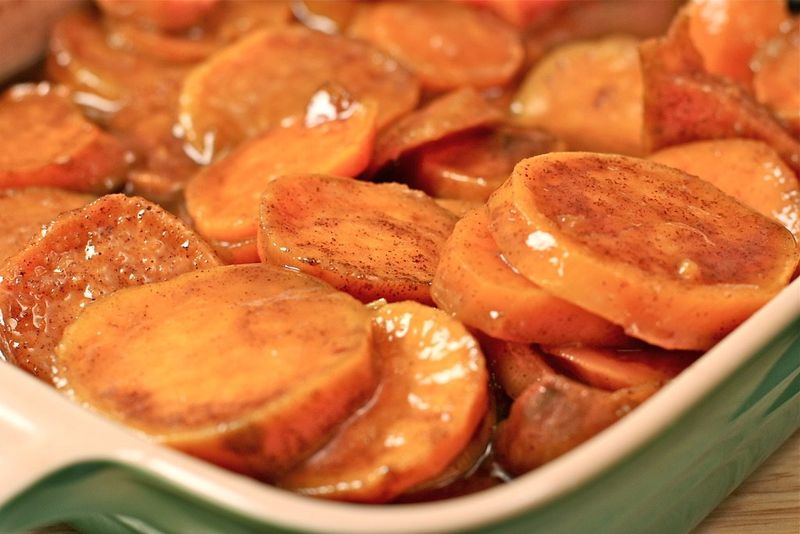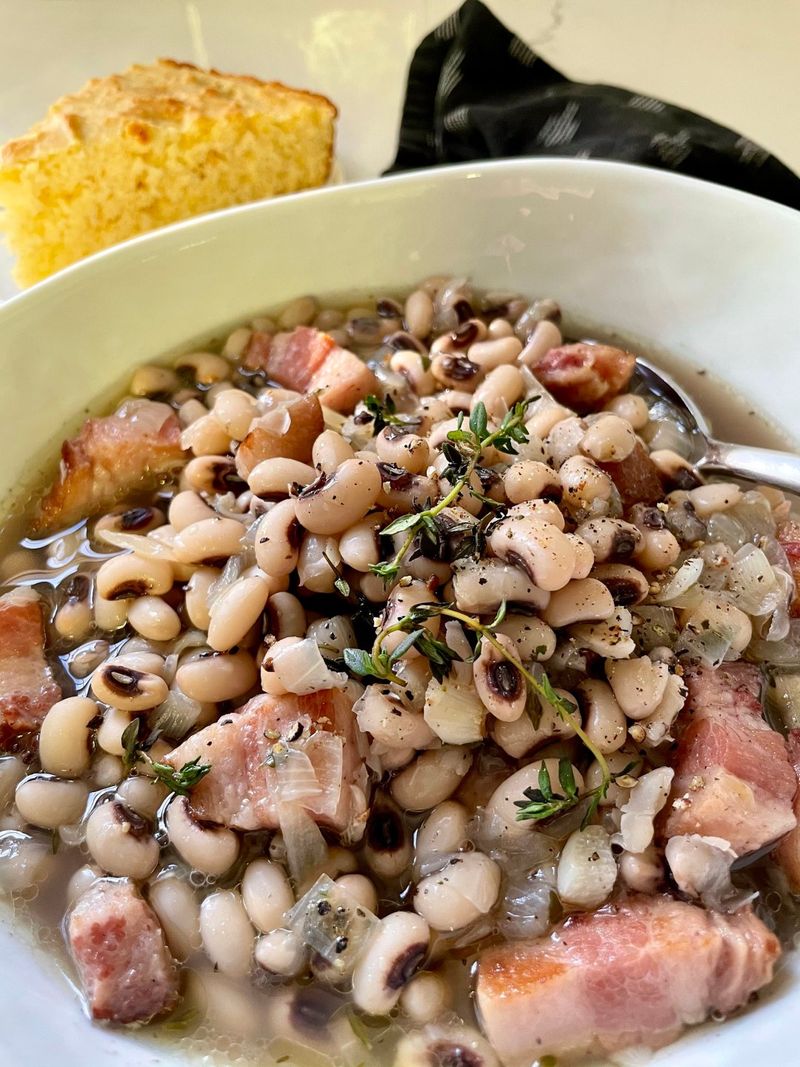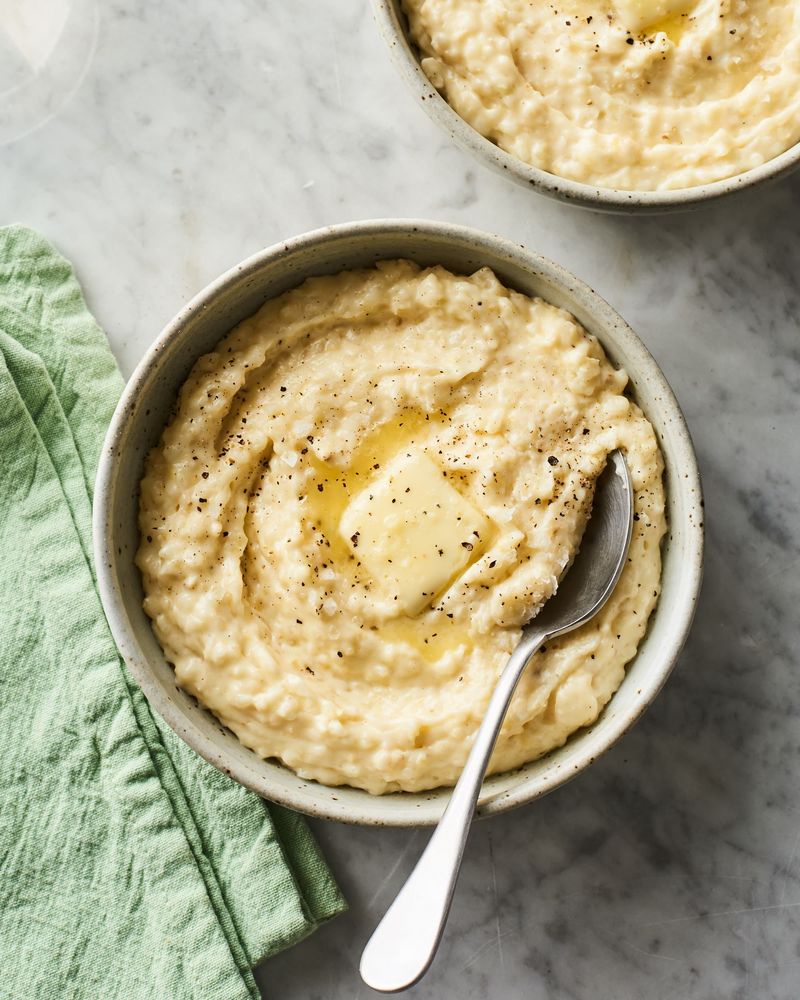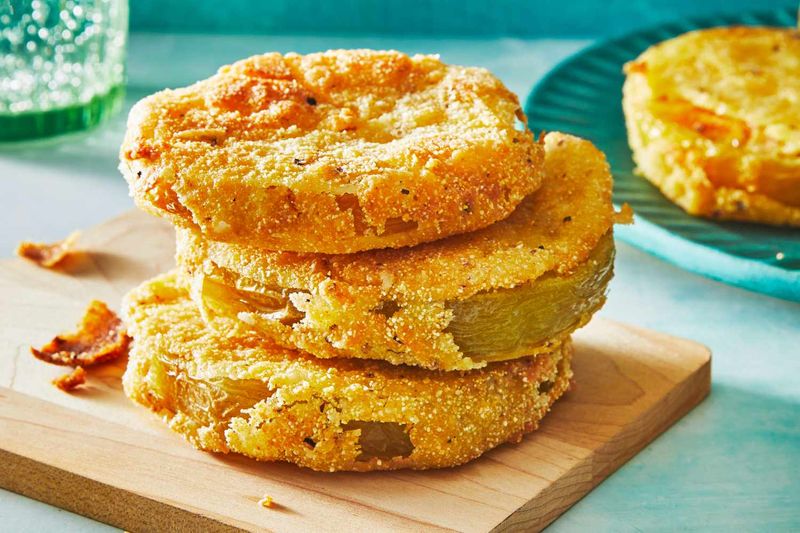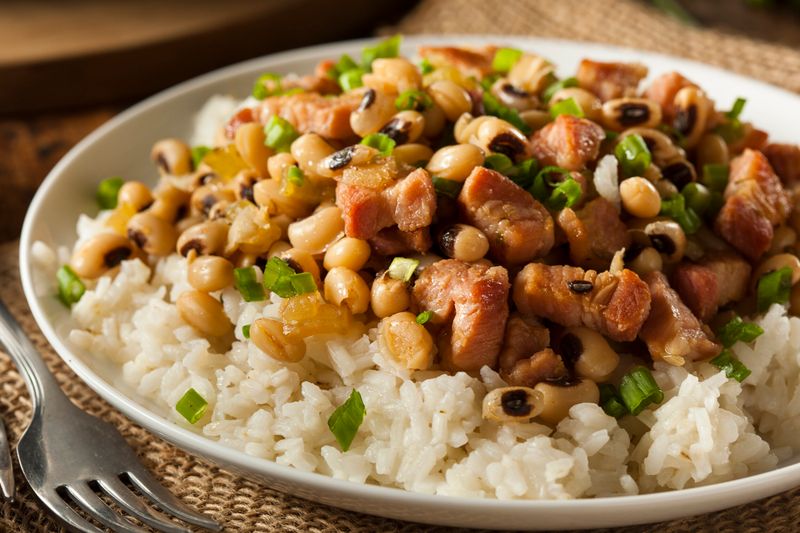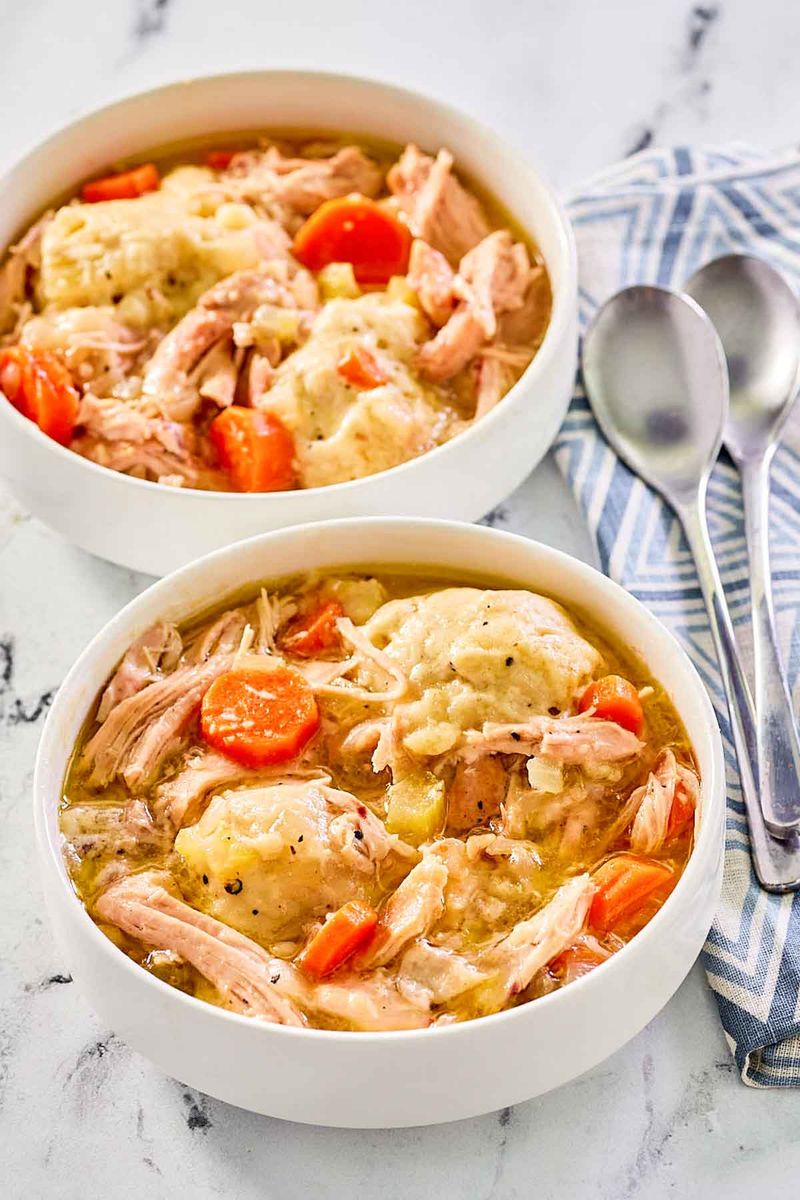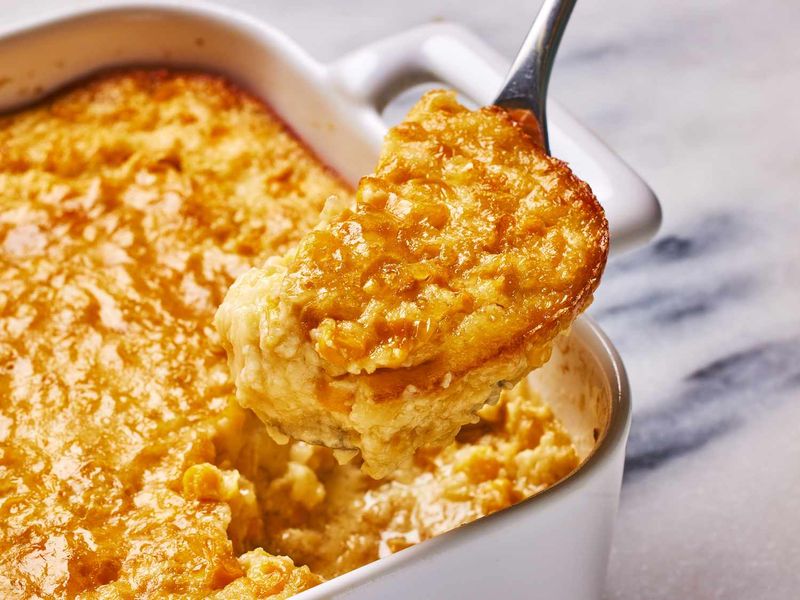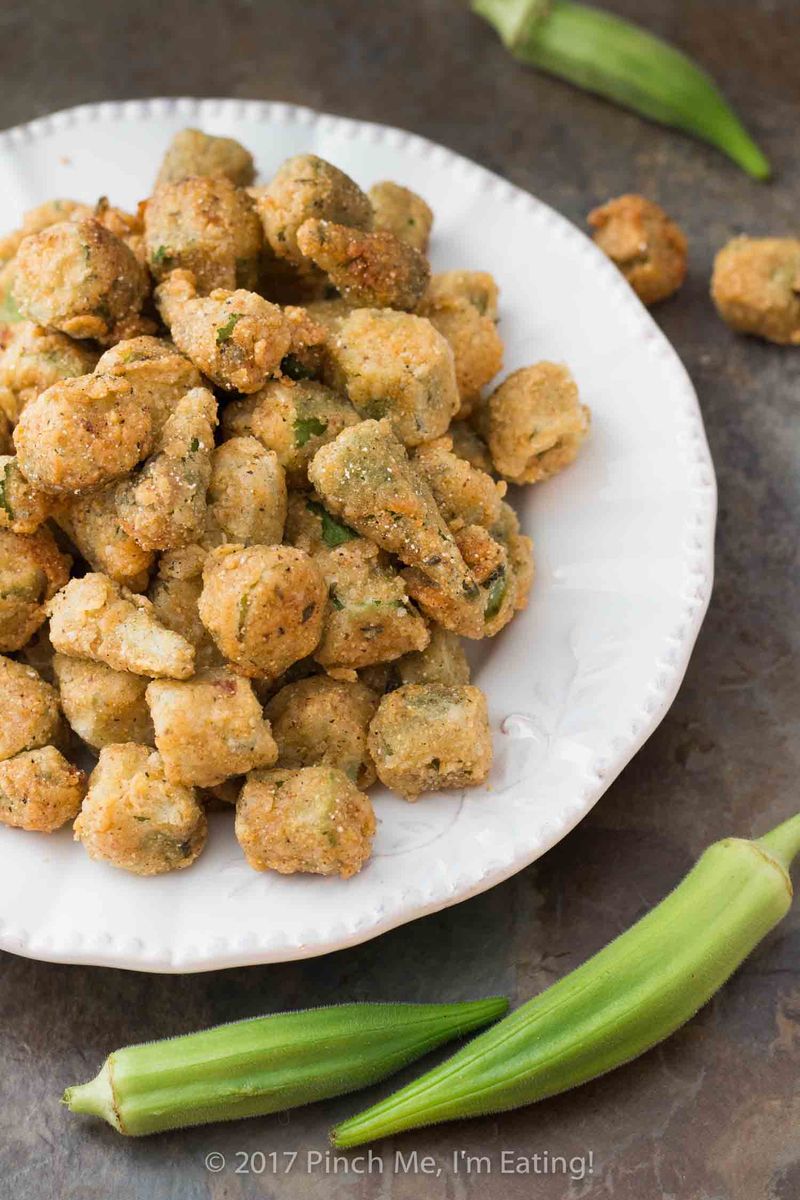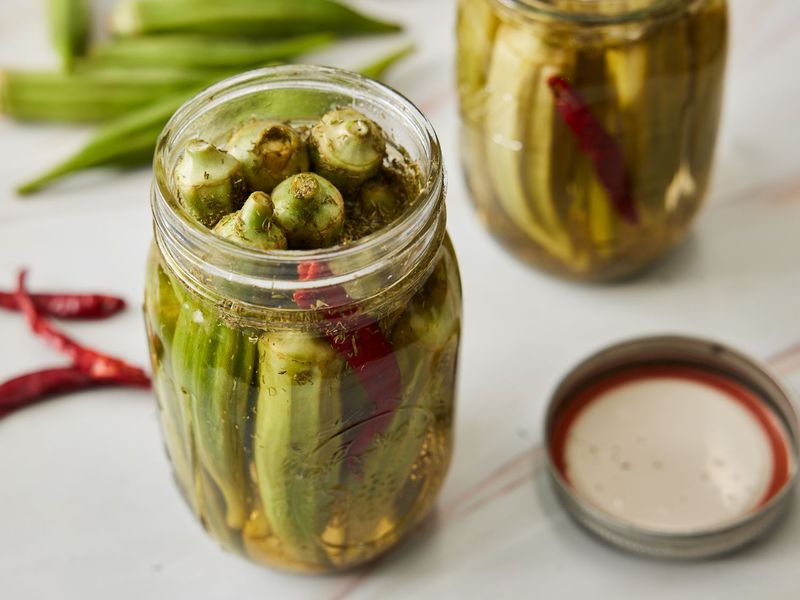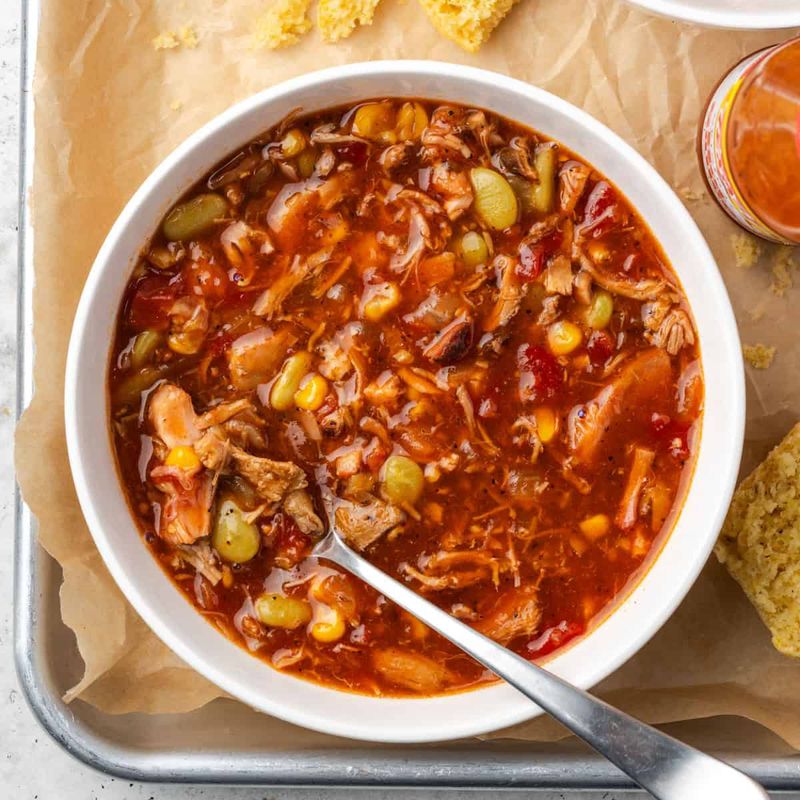Nothing beats the comfort of Southern cooking done right – the way grandma used to make it.
Those cherished family recipes carried stories, traditions, and flavors that modern restaurants just can’t seem to replicate.
What happens when these beloved dishes leave home kitchens and enter commercial spaces? Too often, they lose their soul, becoming shadows of their former glory.
1. Fried Chicken
Crispy on the outside, juicy on the inside – grandma’s fried chicken was a Sunday dinner masterpiece. She’d soak the pieces overnight in buttermilk, season them with her secret blend of spices, and fry them in a decades-old cast-iron skillet that held the flavors of countless family meals. Restaurant versions often miss the mark completely. They arrive either dripping with grease or dried out like cardboard. The seasoning rarely penetrates beyond the overly thick breading, and that distinct homemade flavor is replaced with standardized mediocrity. What’s missing? Time and love. Grandma didn’t rush the process or cut corners with pre-made mixes.
2. Candied Yams
Remember those candied yams that melted in your mouth? Grandma started with fresh sweet potatoes, not the canned stuff. She’d cube them perfectly, then bathe them in a mixture of real butter, brown sugar, cinnamon, and maybe a splash of vanilla. Walk into a restaurant today and what do you get? A sugar bomb. Most places serve what amounts to dessert masquerading as a side dish. The sweet potatoes come from cans, swimming in corn syrup, and topped with a layer of marshmallows so thick you can barely find the yams underneath. The authentic version balances sweetness with the natural flavor of the vegetable, creating harmony rather than sugar shock.
3. Cornbread
Grandma’s cornbread had character – slightly crumbly with crispy edges from that cast iron skillet. The secret? A touch of bacon grease and just enough sugar to enhance the natural sweetness of the corn without overwhelming it. Restaurant cornbread often misses this delicate balance entirely. It’s either a bland, dry brick or a sweet cake that belongs on a dessert menu. Many establishments serve pre-made mixes that lack the coarse texture and distinctive corn flavor that defines real Southern cornbread. Authentic cornbread should stand on its own while still complementing the meal, not competing with the dessert course or disappearing into flavorless obscurity.
4. Biscuits and Gravy
The magic of grandma’s biscuits and gravy started at dawn. She’d cut cold butter into flour with practiced hands, creating layers that would puff up into cloud-like perfection. The gravy simmered slowly, building flavor as sausage drippings mixed with flour and milk until thick and peppered just right. Fast forward to restaurant versions that miss every mark. Biscuits arrive dense and tough, clearly from frozen dough or a mix. The gravy often resembles wallpaper paste – either too thick or watery, with barely a hint of sausage. Good biscuits and gravy should comfort the soul with each bite, not leave you wondering if the kitchen even tried.
5. Black-Eyed Peas
New Year’s Day wasn’t complete without grandma’s black-eyed peas simmering on the stove. The aroma filled the house as ham hocks, onions, and a touch of hot pepper slowly infused the humble legumes with complex flavors and promised good luck for the coming year. Restaurant black-eyed peas rarely capture this essence. They arrive either mushy and indistinct or undercooked and bland. The rich pot liquor that should carry smoky depth is often watery or over-salted to compensate for rushed cooking. Proper black-eyed peas need patience – something missing in commercial kitchens where time equals money and tradition takes a backseat to turnover.
6. Grits
Velvety, buttery, and perfectly seasoned – grandma’s grits were the foundation of many Southern breakfasts. She used stone-ground varieties that maintained their texture and corn flavor, cooking them slowly until they reached that perfect consistency – not too runny, not too thick. Order grits at most restaurants and prepare for disappointment. Quick-cooking or instant versions dominate, resulting in a texture closer to wallpaper paste than food. Many places don’t season them properly, serving bland mush that needs rescuing with salt, pepper, and butter. Real grits have character and substance – they’re not just a neutral backdrop but a star player with their own distinct corn flavor and hearty texture.
7. Collard Greens
Grandma’s collard greens were a labor of love. She’d wash each leaf meticulously before removing the tough stems. The greens would then simmer for hours with smoked ham hocks, onion, vinegar, and red pepper flakes, creating a complex flavor that was simultaneously smoky, tangy, spicy, and slightly sweet. Restaurant collards often miss this complexity entirely. They’re frequently undercooked and bitter or overcooked to mush. The pot liquor – that precious cooking liquid – lacks depth, and many places skimp on the pork, removing the foundation of authentic flavor. The best collards balance earthiness with smoke and tang, requiring time that busy restaurants simply don’t invest.
8. Smothered Pork Chops
The symphony of flavors in grandma’s smothered pork chops began with proper browning. Those caramelized bits formed the foundation for a silky onion gravy that would slowly tenderize even the most humble cut of meat during hours of gentle cooking. Restaurant versions typically take shortcuts that sacrifice everything that makes this dish special. Chops arrive tough and dry, clearly cooked quickly at high heat instead of the low-and-slow method that creates fork-tender meat. The gravy often comes from a mix or roux that wasn’t given time to develop flavor. Authentic smothered pork chops should melt in your mouth, with gravy rich enough to make you want to lick the plate clean.
9. Sweet Potato Pie
Grandma’s sweet potato pie was autumn on a plate. She’d roast the potatoes until caramelized, enhancing their natural sweetness before mashing them by hand. The filling balanced warm spices with just enough sugar, all cradled in her flaky, buttery crust. Restaurant versions miss the mark by a country mile. Many use canned sweet potatoes or even substitute pumpkin entirely! The spice profile often leans heavily on cinnamon alone, missing the complexity of nutmeg, ginger, and vanilla that should harmonize in each bite. The crust? Usually pre-made and lacking that imperfect, handcrafted quality that speaks of care and tradition rather than mass production.
10. Fried Green Tomatoes
Summer gardens always yielded green tomatoes that grandma transformed into crispy, tangy delights. Her technique was specific – slices not too thick or thin, a light dusting of cornmeal and flour, and quick frying in hot oil to achieve that perfect contrast between crunchy coating and firm yet tender tomato. Restaurant fried green tomatoes often disappoint on every level. The coating slips off because the tomatoes weren’t properly dried or dredged. Worse, many places use tomatoes that are too ripe, resulting in mushy interiors that leak watery juice. Authentic fried green tomatoes should hold their shape and offer that distinctive tartness that makes them special, not just be another fried appetizer.
11. Hoppin’ John
New Year’s traditions included grandma’s Hoppin’ John – a hearty mix of black-eyed peas, rice, and pork that promised prosperity. Each component maintained its integrity while coming together in perfect harmony, with the rice fluffy, the peas tender but intact, and the pork adding smoky depth. Restaurant versions rarely achieve this balance. The rice often arrives overcooked and mushy or undercooked and crunchy. The peas lose their shape, creating a starchy mess rather than distinct elements that complement each other. Most disappointing is the lack of that special seasoning – the bay leaf, thyme, and pepper that should infuse every grain and legume with Southern soul and promise of good fortune.
12. Macaroni and Cheese
Grandma’s mac and cheese was legendary – a bubbling casserole with a golden-brown crust hiding creamy, cheesy pasta beneath. She used sharp cheddar, never pre-shredded (it contains anti-caking agents that prevent proper melting), and made a proper béchamel sauce as the base. Restaurant versions fall into two disappointing categories. Some serve neon-orange sauce from a powder or can, lacking any real cheese flavor. Others attempt a more upscale approach but ruin it with fancy cheeses that don’t melt properly or unnecessary additions like truffle oil or breadcrumbs that overwhelm the dish. Real Southern mac and cheese needs nothing more than good cheese, milk, butter, and pasta, baked until perfect.
13. Catfish
Fresh-caught catfish was a Friday night tradition in grandma’s kitchen. She’d coat fillets in cornmeal seasoned with salt, pepper, and maybe a touch of cayenne before frying them to golden perfection. The result was crispy outside, flaky inside, with no hint of muddy taste that poorly prepared catfish can have. Restaurant catfish often disappoints on multiple fronts. Many places use frozen, imported fish that lacks the clean flavor of fresh catfish. The coating frequently slides off because the fish wasn’t properly dried, or it’s too thick and greasy, masking rather than complementing the delicate flavor. Good catfish should taste of Southern waterways and summer evenings, not freezer burn and old oil.
14. Tomato Gravy
Grandma’s tomato gravy was summer sunshine on a spoon. She’d start with bacon drippings, add flour for a roux, then fold in garden-fresh tomatoes until they broke down into a velvety sauce with just the right balance of acidity and richness. This humble sauce elevated everything from grits to biscuits. Restaurant versions rarely capture this magic. They’re often one-dimensional – either too acidic and tomato-forward or too bland and watery. Some places even confuse tomato gravy with marinara sauce, missing the point entirely! True tomato gravy should have Southern roots visible in every spoonful, with a complexity that comes from the marriage of tomato brightness and savory bacon depth.
15. Chicken and Dumplings
The ultimate comfort food, grandma’s chicken and dumplings featured tender shreds of chicken in rich broth with dumplings that were neither too dense nor too fluffy. She made them by hand, rolling out the dough to just the right thickness before cutting it into rustic strips or rounds. Restaurant versions miss this delicate balance. The dumplings arrive as heavy, doughy balls or thin noodles clearly from a package. The broth lacks depth, tasting more of bouillon than slow-simmered chicken. Most disappointing is the chicken itself – often dry, stringy pieces that were clearly added at the end rather than cooked slowly in the broth, missing the opportunity to both flavor the liquid and absorb its richness.
16. Red Beans and Rice
Monday was red beans day in grandma’s house – a tradition from when laundry took all day and beans could simmer unattended. Her version had a velvety texture from beans cooked until some broke down naturally to thicken the pot, with andouille sausage adding smoky depth to every bite. Restaurant red beans rarely achieve this perfect consistency. They’re either too soupy or too dry, and the beans themselves often remain firm and separate rather than creating that creamy, unified dish that defines proper red beans. The seasoning profile frequently misses the mark too – lacking the bay leaf, thyme, and holy trinity of onions, celery, and bell pepper that should form the foundation of this New Orleans-inspired classic.
17. Deviled Eggs
No family gathering was complete without grandma’s deviled eggs on her special egg plate. The filling was a perfect balance of tangy and creamy – egg yolks mashed with just enough mayonnaise, a touch of mustard, and perhaps a splash of pickle juice for brightness. Restaurant deviled eggs have become victims of unnecessary innovation. Chefs add bizarre ingredients like wasabi, caviar, or truffle oil that overwhelm the egg’s natural flavor. Others go minimalist but miss the seasoning entirely, serving bland, mayonnaise-heavy fillings that lack any punch. The classic version needs no improvement – just quality ingredients and the restraint to let simple flavors shine through, topped with nothing more extravagant than a sprinkle of paprika.
18. Corn Pudding
Thanksgiving wasn’t complete without grandma’s corn pudding – a silky custard studded with sweet corn kernels that straddled the line between side dish and dessert. The texture was magical – firm enough to hold its shape when served but soft enough to melt in your mouth. Restaurant corn pudding rarely achieves this textural perfection. It’s often either too firm and eggy, resembling a quiche, or too loose and soupy. The corn itself is frequently an afterthought, with frozen or canned kernels that lack the fresh sweetness that makes this dish special. The best corn pudding celebrates corn’s natural sweetness while complementing savory main dishes – a balance many commercial kitchens fail to strike.
19. Okra
Grandma knew the secrets to perfect okra – how to avoid the dreaded slime while preserving the vegetable’s unique grassy flavor. For fried okra, she’d cut it small, coat it in cornmeal, and fry it quickly at high temperature. For stewed okra and tomatoes, she’d use acid from tomatoes to cut the slickness. Restaurant okra often fails on both fronts. Fried versions arrive greasy and soggy instead of crisp, while stewed preparations embrace rather than minimize the mucilaginous quality. Many places overcook it until the texture becomes unpleasantly soft and the flavor bitter. Good okra should convert even skeptics with its tender-crisp texture and distinctive taste that’s been a Southern staple for generations.
20. Cucumber & Onion Salad
Summer gardens always yielded an abundance of cucumbers that grandma would transform into the perfect cool side dish. Paper-thin slices of cucumber and sweet onion would marinate in a simple dressing of vinegar, water, sugar, and salt – creating a perfect balance of crisp vegetables and tangy-sweet dressing. Restaurant versions miss this harmony completely. Many are drowning in straight vinegar with no sweetness to balance the acidity. Others use thick-cut vegetables that don’t properly absorb the marinade or add unnecessary ingredients like bell peppers or tomatoes that muddy the clean flavors. The beauty of this salad lies in its simplicity – something lost when restaurants try to make it fancy or cut corners on marinating time.
21. Hoe Cakes
Grandma could whip up hoe cakes with just cornmeal, water, and a touch of salt – a testament to Southern ingenuity during lean times. These simple pancakes, cooked in bacon fat until the edges crisped while the centers remained tender, were the perfect vehicle for sorghum syrup or the last bits of gravy on your plate. Restaurant hoe cakes bear little resemblance to these humble delights. They’re often made with flour-heavy batters that produce thick, cakey results instead of the thin, crispy-edged original. Some places even serve glorified pancakes with corn kernels mixed in, missing the point entirely. Authentic hoe cakes celebrate simplicity and resourcefulness – qualities rarely found in commercial kitchens.
22. Pimento Cheese
The caviar of the South! Grandma’s pimento cheese was a perfect balance of sharp cheddar (hand-grated, never pre-shredded), creamy mayonnaise, and tangy pimentos with just enough pepper to make it interesting. The texture was chunky yet spreadable, with each ingredient maintaining its identity. Store-bought and restaurant versions pale in comparison. Many use processed cheese that creates an unnaturally smooth, Velveeta-like spread. Others go too far in the opposite direction, using fancy cheeses that don’t meld properly or adding unnecessary ingredients like garlic or herbs that distract from the classic flavor profile. True pimento cheese needs just a few quality ingredients and the restraint to let them shine.
23. Pickled Okra
Grandma’s pantry always had jars of pickled okra – crisp, tangy pods that maintained their bright green color and distinctive texture. Her brine balanced vinegar sharpness with subtle garlic, dill, and a touch of heat from red pepper flakes. Commercial pickled okra misses this careful balance. Many versions are either too vinegary or too salty, overwhelming the okra’s natural flavor. Worse, the texture often suffers – either too soft and slimy or too tough and woody from using overgrown pods. The best pickled okra should offer a satisfying crunch when you bite into it, followed by a burst of tangy brine that complements rather than masks the vegetable’s unique character.
24. Brunswick Stew
Community gatherings often featured huge pots of grandma’s Brunswick stew – a thick, smoky concoction that showcased whatever meat was available alongside corn, tomatoes, and lima beans. The magic came from hours of slow simmering that allowed the flavors to meld while each ingredient maintained its integrity. Restaurant Brunswick stew rarely achieves this perfect unity. It’s often thin and soup-like rather than hearty and substantial. The meat – traditionally a mix that might include chicken, pork, and game – is frequently limited to a single protein, losing the complexity that defines this dish. Worst of all is the use of canned vegetables that never break down properly, remaining distinctly separate instead of becoming part of the cohesive whole.
25. Peach Cobbler
Late summer meant fresh peach cobbler in grandma’s kitchen. She’d use perfectly ripe peaches, their juice creating a natural syrup that bubbled up through a buttery, biscuit-like topping that was crisp on top and tender where it soaked up the fruit juices. Restaurant cobblers often miss this magical interaction between fruit and crust. Many use canned peaches swimming in heavy syrup, creating a cloyingly sweet dessert without any fresh fruit brightness. The crust frequently arrives as a separately baked item placed on top, rather than being baked together with the fruit. A proper cobbler should showcase the peaches first and foremost, with the crust playing a supporting role – not the other way around.


